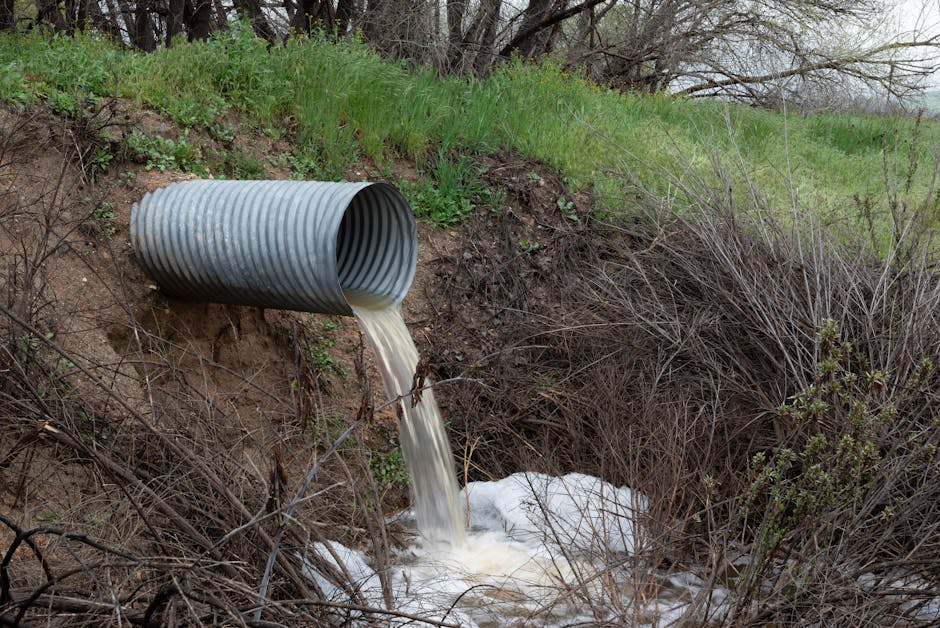The Top 3 Powerful Solutions for Connecting Sewage Pipes in 2024
Navigating the Challenges of Sewage Pipes
When it comes to maintaining your property, sewage pipes play a crucial role. They ensure that waste water is efficiently removed from your home, making the living environment safe and sanitary. However, these pipes often encounter common issues that can lead to significant headaches if not addressed promptly.
Quick Guide to Sewage Pipe Issues:
- Clogs: Often caused by grease, hair, or debris.
- Leaks: Can lead to unsanitary conditions and damage.
- Root Intrusions: Tree roots seek out moisture and can invade pipes.
- Corrosion: Especially in older metal pipes, leading to leaks and blockages.
Understanding these common challenges helps in diagnosing problems early and ensures that your sewage pipes stay in good working condition.
Types of Sewage Pipes
When it comes to sewage pipes, the type of pipe you have or choose can make a big difference in performance and longevity. Let’s break down the common types:
PVC and ABS Pipes
PVC (Polyvinyl Chloride) and ABS (Acrylonitrile Butadiene Styrene) pipes are popular choices for modern plumbing systems.
- Lightweight and Easy to Cut: These pipes are simple to handle and install, making them a favorite for DIY projects.
- Inexpensive: PVC and ABS pipes are budget-friendly and widely available.
- Root-Resistant: Both types have smooth interiors and exteriors, which help resist root intrusion.
- Low-Pressure Rating: PVC pipes, in particular, have a lower pressure rating (about 100 psi for 4-inch pipes), which might be a consideration depending on your needs.
- Durability: Expected to last about 100 years underground, but can degrade from chemical reactions and extreme temperatures.
Clay Pipes
Clay pipes are an older type of sewer piping, often found in homes built before the 1950s.
- Chemical Resistance: Clay pipes are highly resistant to chemical degradation.
- Heavy and Tricky to Cut: These pipes are not easy to handle and require special tools to cut.
- Porous: The porous nature can lead to root infiltration, causing blockages and damage over time.
- Longevity: Despite their drawbacks, clay pipes can last for a very long time if maintained properly.
Cast-Iron Pipes
Cast-iron pipes are known for their strength and are still used today, especially in older homes.
- Strength: Can withstand high pressures, with a 4-inch diameter pipe handling over 350 psi.
- Non-Flammable: Safe to use in various environments due to its non-flammable nature.
- Heavy and Costly: These pipes are very heavy and expensive to install and maintain.
- Corrosion: Over time, cast-iron pipes can corrode, leading to leaks and blockages.
Orangeburg Pipes
Orangeburg pipes are a type of fiber conduit pipe, used mainly in homes built before the 1950s.
- Lightweight and Easy to Cut: These pipes are simple to handle and install.
- Low-Cost: An economical option at the time of installation.
- Short Lifespan: Orangeburg pipes have a much shorter lifespan compared to other types, often requiring replacement.
- Rare: Due to their short lifespan and tendency to fail, they are rarely found in modern homes.
Understanding the types of sewage pipes and their characteristics helps in making informed decisions, whether you’re installing a new system or maintaining an existing one.
Common Challenges in Connecting Sewage Pipes
Connecting sewage pipes can be tricky. Here are some common challenges you might face, along with solutions to tackle them.
Clogs
Causes: Clogs often occur due to the build-up of fat, oil, and grease (FOG) or debris. Flushing non-degradable items like wet wipes can also cause blockages.
Prevention: Avoid pouring FOG down the drain. Use a grease container instead. Regularly clean drains with a mix of baking soda and vinegar to prevent build-up.
Cleaning Methods: For minor clogs, a plunger or drain snake can help. For severe blockages, a water jet might be needed to clear the pipe.
Leaks
Detection: Leaks can be tricky to spot. Look for signs like damp spots, foul odors, or a sudden increase in your water bill.
Repair Methods: Depending on the severity, you might need a simple patch or a more extensive repair like sliplining. Sliplining involves inserting a new pipe into the existing one and filling the gap with grout.
Prevention: Regular inspections can catch small leaks before they become big problems. Ensure your pipes are properly sealed and insulated.
Root Intrusion
Causes: Tree roots naturally seek out moisture, which makes your sewer pipes an attractive target. Once roots infiltrate, they can cause significant damage.
Prevention: Be careful where you plant trees and shrubs. Choose plants with shallow root systems and keep them away from your sewer lines.
Repair Methods: Options include water jetting to clear the roots or using chemical treatments to kill them. In severe cases, you might need to replace the affected section of the pipe.
Corrosion and Pipe Degradation
Causes: Corrosion occurs due to chemical reactions between the pipe material and the substances flowing through it. Over time, this weakens the pipe, leading to leaks or breaks.
Prevention: Use corrosion-resistant materials like PVC or HDPE for your sewage pipes. Regular inspections can help catch early signs of degradation.
Repair Methods: For minor corrosion, pipe lining can reinforce the existing pipe. In more severe cases, you might need to replace the entire pipe.
Understanding these common challenges can help you maintain a functional and efficient sewage system. Next, we’ll explore the solutions available for connecting sewage pipes.
Solutions for Connecting Sewage Pipes
When it comes to connecting sewage pipes, there are several modern solutions that offer minimal disruption and long-lasting results. Here are some effective methods:
Trenchless Repair
Trenchless repair is a no-dig method that allows for the repair or replacement of underground sewage pipes without the need for extensive excavation. This approach is cost-effective and minimizes disruption to your property.
Cured-In-Place Pipe (CIPP)
Cured-In-Place Pipe (CIPP) is a trenchless repair method that involves inserting a resin liner into the existing pipe. The liner is then cured using hot steam, forming a new pipe within the old one. This method is long-lasting and can extend the life of your sewage pipes by up to 100 years.
- Pros: Minimal digging, long lifespan
- Cons: Takes 12 to 24 hours to cure
Pipe Bursting
Pipe bursting is another trenchless method that replaces old, damaged pipes without the need for extensive digging. A bursting head is sent through the existing pipe, breaking it apart while simultaneously pulling in a new pipe behind it. This technique is ideal for pipes with extensive damage.
- Pros: Replaces old pipe without major excavation, minimal disruption
- Cons: Existing pipe remains in the ground
Pipe Lining
Pipe lining involves applying a resin coating to the inside of the existing pipe, which strengthens it and seals any leaks. This method is also trenchless, making it less invasive and quicker to complete compared to traditional pipe replacement.
- Pros: Strengthens pipe, minimal disruption
- Cons: Requires access to the pipe for application
Using these modern methods, you can effectively connect and repair sewage pipes without the hassle and expense of traditional excavation. Next, we’ll address some frequently asked questions about sewage pipes.
Frequently Asked Questions about Sewage Pipes
What type of pipe is used for sewage?
The type of pipe used for sewage can vary depending on the age of the home and the specific requirements of the sewage system. Here are the most common types:
- PVC (Polyvinyl Chloride): Lightweight, easy to cut, and inexpensive. It’s a popular choice for new installations and replacements. PVC pipes are expected to last about 100 years underground.
- Vitrified Clay: Known for its chemical resistance and durability. However, clay pipes can be heavy and prone to root infiltration due to their porous nature.
- Ductile Iron: Extremely strong and able to withstand high pressures. Cast-iron pipes are still used today, especially in situations where durability is critical.
What is the outside sewer pipe called?
The outside sewer pipe is typically referred to as the mainline. This is the large pipe that transports wastewater from your home to the municipal sewer system or a septic tank.
Another important component is the cleanout location. This is a fitting installed at main elbows or the far end of the system, providing access for maintenance and cleaning. Cleanouts make it easier to address clogs and other issues without digging up the entire yard.
What is the difference between a sewer line and a sewage line?
The terms sewer line and sewage line are often used interchangeably, but they have distinct meanings:
- Sewer Line: Refers to the entire structure that transports wastewater from your home to the municipal sewer system or septic tank. This includes all the pipes, fittings, and cleanouts.
- Sewage Line: Specifically refers to the pipes that carry the waste itself. In other words, sewage is the actual waste material, while sewerage is the system of pipes and infrastructure that handles it.
Understanding these differences can help you better communicate with professionals and ensure your sewage system is properly maintained.
Conclusion
Connecting sewage pipes can seem daunting, but understanding the common challenges and solutions makes it more manageable. From dealing with clogs and leaks to addressing root intrusions and corrosion, being proactive helps maintain a healthy sewer system.
At Marchi Paving Inc., we pride ourselves on our expertise and commitment to quality. Serving Chelmsford, MA, and surrounding areas, we bring over 30 years of experience to every project. Our team uses advanced equipment and cutting-edge techniques to ensure your sewage system is efficient and durable.
Whether you need trenchless repair, pipe bursting, or any other solution, we have the skills and tools to get the job done right.
Ready to tackle your sewage pipe issues? Contact us today for a detailed quote and experience the Marchi Paving difference.
By staying informed and choosing the right professionals, you can keep your sewage system running smoothly and avoid costly repairs down the line.





